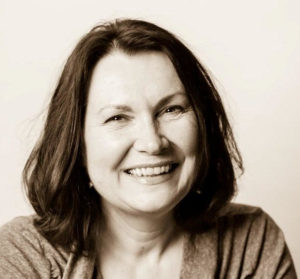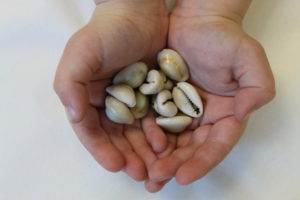Today SevenPonds connects with Sarah Hirsch, an estate organizer and genealogist who works with clients on sorting and properly memorializing personal possessions. When a loved one dies, it’s often difficult for families to go through their loved one’s things and decide which objects to keep. Hirsch helps families in the San Francisco Bay area make these difficult decisions. In part two of this two-part interview, she offers tips on how to organize an estate.

Credit: Sarah Hirsch
Marissa: How should families store special items?
Sarah: Dark, dry, and cool is the storage rule for organic materials like fabric, leather, paper, and photos on paper. The top culprits of destroyed items are light, humidity, and heat.
Avoid long term wrapping and storing in plastic. Plastics pose a chemical threat because almost all plastics give off gas. Archival quality polyester or polypropylene sleeves are used for document and photo storage, but beware of you sources. The ones available at the office supply store may claim to be archival and acid-free, but this is meaningless. There are no manufacturing or labeling regulations, so any manufacturer can state that a product is archival. And acids are not used to produce plastics, so the acid-free claim is nonsense.
Here are a few archival supply manufactures/suppliers trusted by conservation professionals: Talas, Archival Methods, Hollinger Metal Edge and Atlantic Protective Pouches.
Marissa: What steps should a family take to go through the personal belongings of someone who has died?
Sarah: That’s easy — safety first! Safety tips may sound boring, but I want to prevent people from tripping headlong over stuff piled on stairs, or getting shot by a loaded gun falling off the top shelf of an overstuffed closet. These things do happen.
Here are a few safety tips:
1 – Are the plumbing, electrical, heating, air condition systems in safe working condition?
2 -Do the doors, windows, and gates all lock? Is there a working alarm system?
3 – Are there weapons in the house? Where?
4 – Is there a clear path to exits? There should be more than one easily accessible exit.
5 – Trip hazards: Keep hallways and walkways clear. Use tabletops for sorting and storing whenever possible.
6 – Self-care: Consider how useless you’ll be if you’re injured or become sick because you didn’t adequately look after your own needs!
To get an estate organized, take these steps:
Start with the kitchen if you’re not sure where else to start. Most everything in a kitchen isn’t emotionally-charged, and you’ll need to get rid of perishable food as soon as possible.
Go through each room with a focus on sorting, not tossing. Group everything into categories like paperwork; office supplies; keys, jewelry, and valuables; kitchenware; clothing; decor; and prescription medications.
Keep any tools you find, like hammers or screwdrivers, in a spot that’s easy to reach, and only move them out of the house once you’re done organizing. (You can use them for minor repairs or to remove items from the house as you work.)
Search inside each book, because these are a favorite hiding place for valuables like cash, photos or love letters.
Empty and remove all drawers to catch any items that have fallen into cracks.
Check clothing pockets and purses for items (this sort of job is best assigned to children or people with mobility issues, since they are low-energy, detail-oriented and time-consuming processes).
Go slow. Pace yourself and pay attention. In the long run, you’ll actually go faster this way, and stay much safer.
Marissa: What are some of the biggest success stories you’ve had as an estate organizer and genealogist?

Credit: wikipedia.org
Sarah: I rarely know what things I do or say that make the biggest difference for clients. From my perspective, the successes are a steady stream of small victories; a cabinet cleared, a car title found, an antique family photo discovered behind a drawer. Small things can turn out to be deeply meaningful.
In one estate, there were a few feathers, shells and stones scattered throughout the home — objects probably picked up on walks. They would have been easy to discard, but I gathered them together. When the executor saw the pile, he realized that it would be perfect for an upcoming memorial ceremony.
Marissa: What should families keep in mind as they organize an estate?
Sarah: The profound transition of death and the torch passing from one generation to the next is an event like no other. I’m in favor of families keeping as much as they want to, can afford to, and have room for. Belongings can always be disposed of later, but once they’re gone, they can rarely be retrieved. It’s true that a person may look at an item in a few years and wonder why in the world they kept it. But this will serve as a clear marker of their movement through grief. I don’t think it’s healthy to get rid of too much stuff immediately after a death — or to make any big changes unless necessary.

Credit: pixabay.com
Major loss can trigger any number of extreme reactions that indicate someone is running away from their feelings. People may react by wanting to keep everything or to get rid of everything. I’m fascinated by the stories of people who destroy everything. I was recently asked for help in finding photos of someone’s ancestors. The woman told me that she didn’t have any because her alcoholic grandmother burned them all. Burning family photos is surprisingly common.
I was discussing genealogy with a man who told me that he has no family records. When his grandparents died, his parents, aunts and uncles went to the house, built a bonfire in the yard, carried out the entire contents of the house and burned everything. I was shocked, and the man still seemed quite shocked himself. Cremation is an honorable way to dispose of a body, but not an estate! The decisions made about what to keep and what to discard can reverberate down through generations.
To find out more, read Part One of our interview with Sarah here.

 How Do You Memorialize Your Loved One’s Belongings? An Interview with Sarah Hirsch, Part Two
How Do You Memorialize Your Loved One’s Belongings? An Interview with Sarah Hirsch, Part Two


 Our Annual Seven Holiday Gifts for Someone Who Is Grieving, 2024 Edition
Our Annual Seven Holiday Gifts for Someone Who Is Grieving, 2024 Edition
 “Making Mobiles” by Karolina Merska
“Making Mobiles” by Karolina Merska
 “Hands Up to the Sky” by Michael Franti & Spearhead
“Hands Up to the Sky” by Michael Franti & Spearhead














